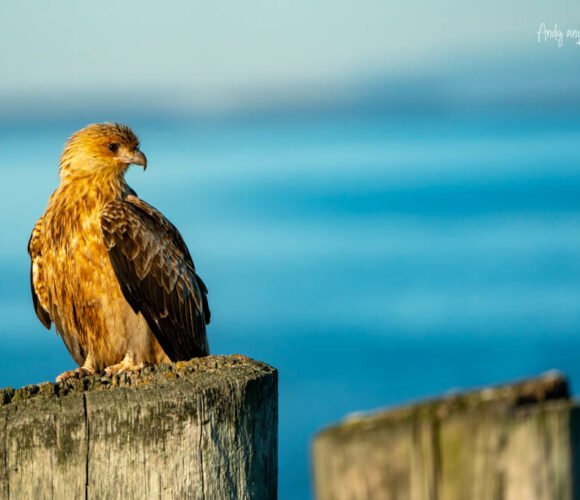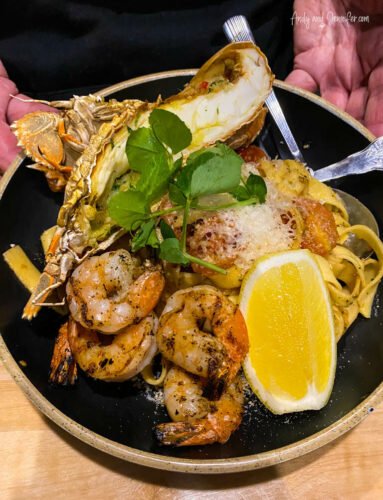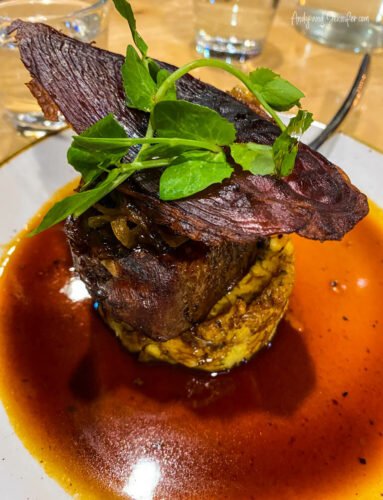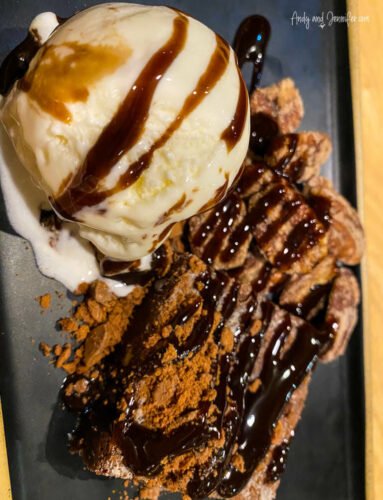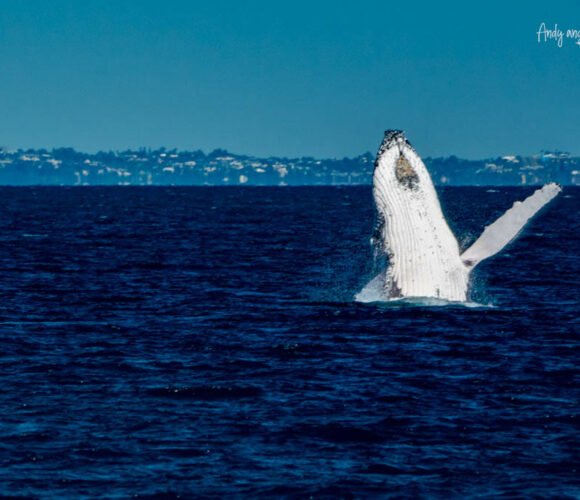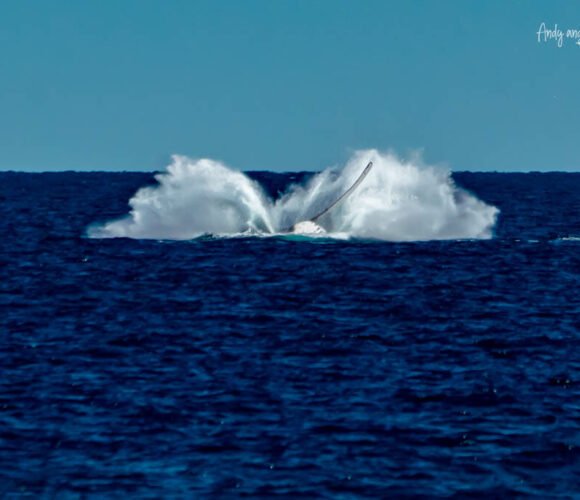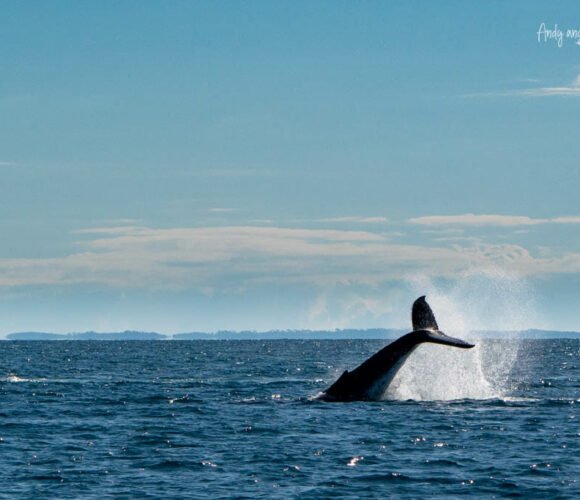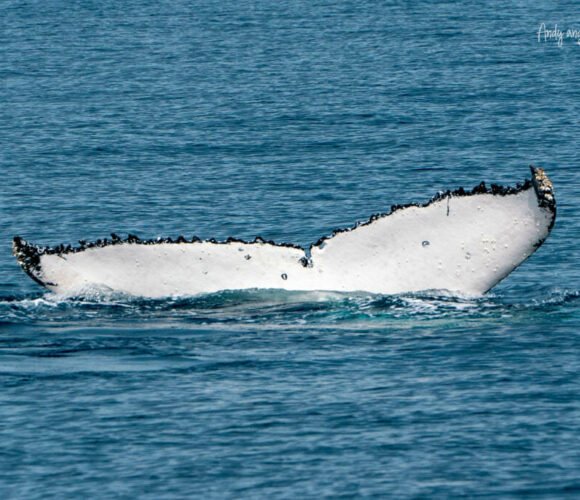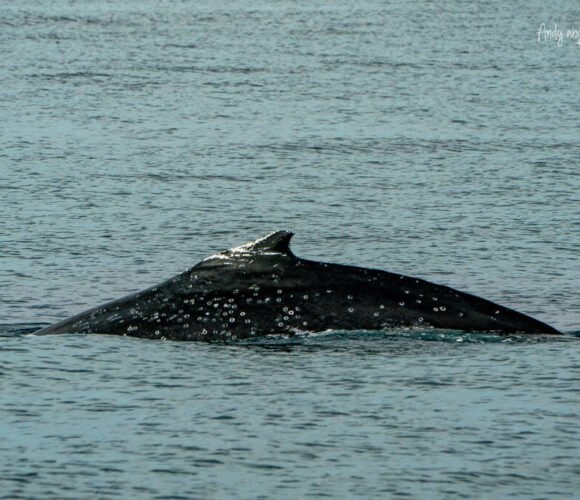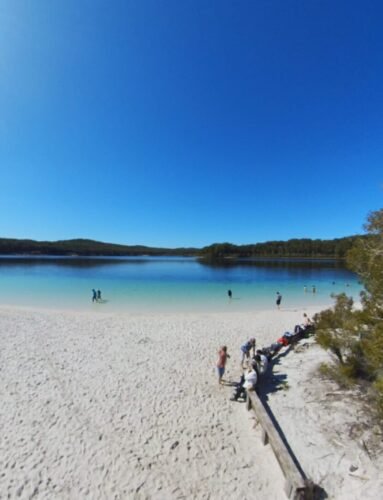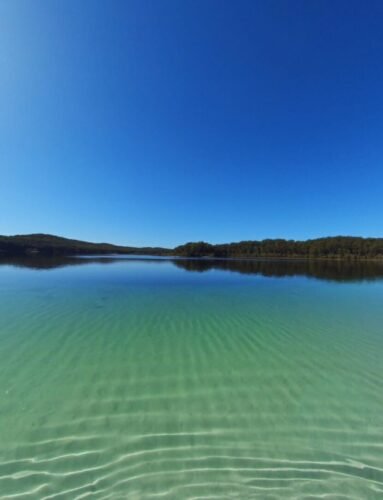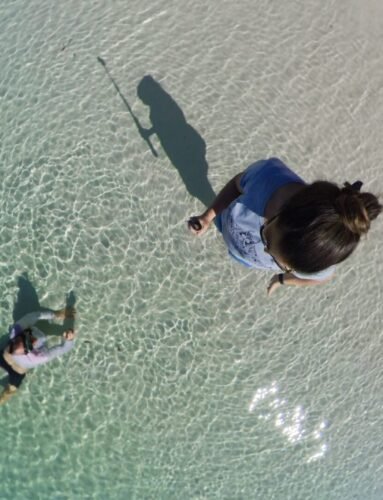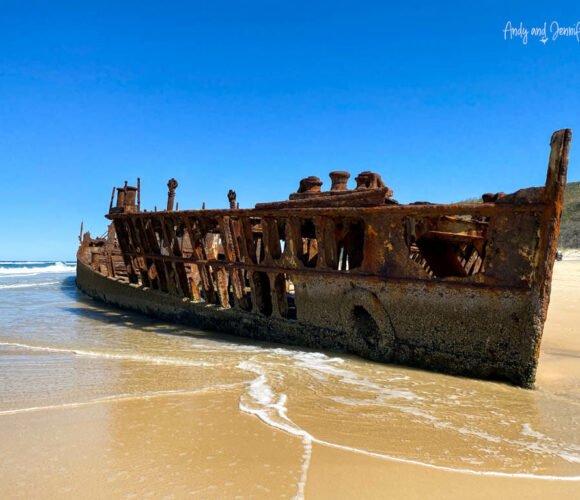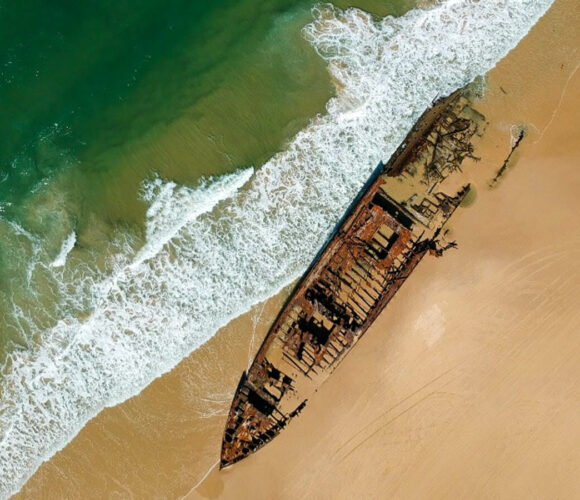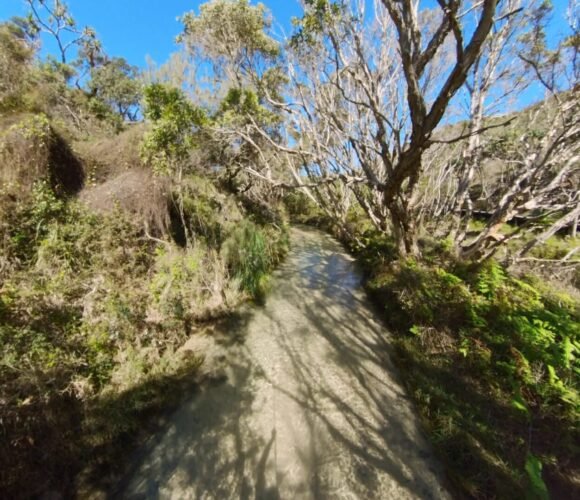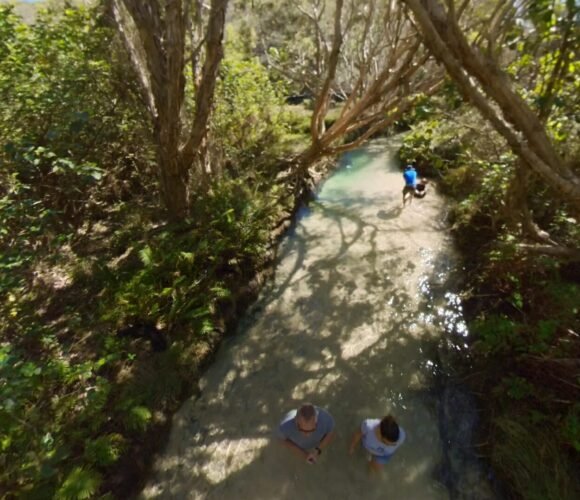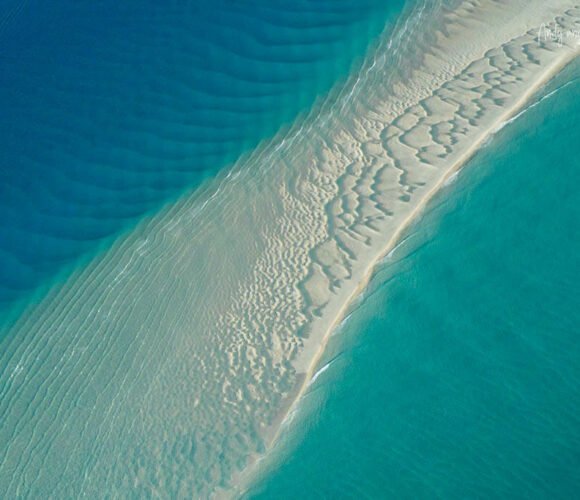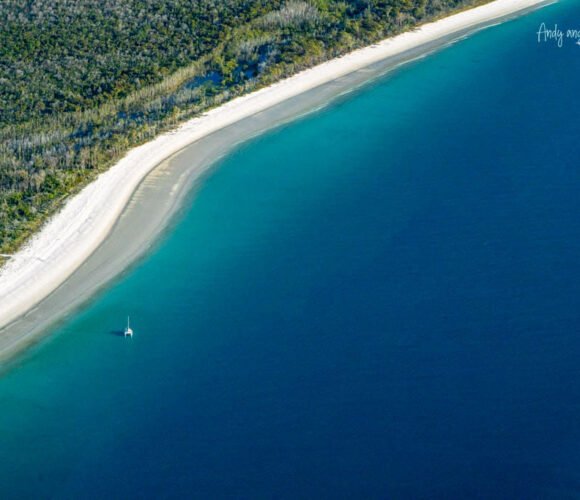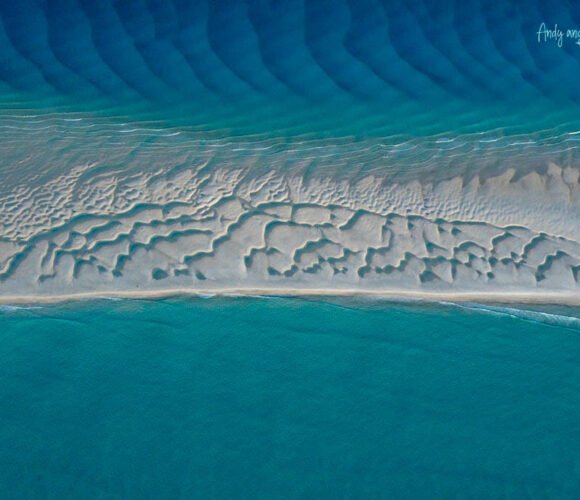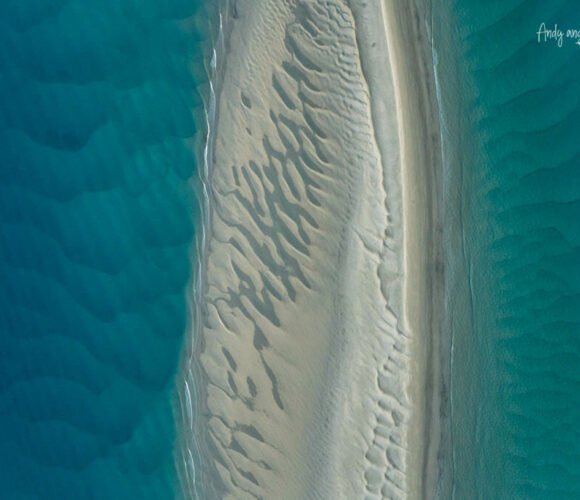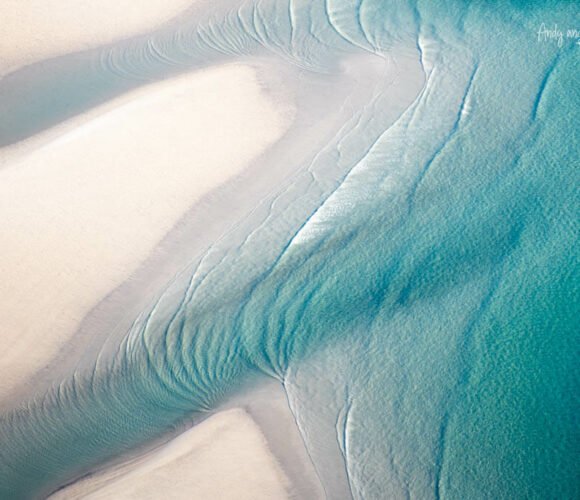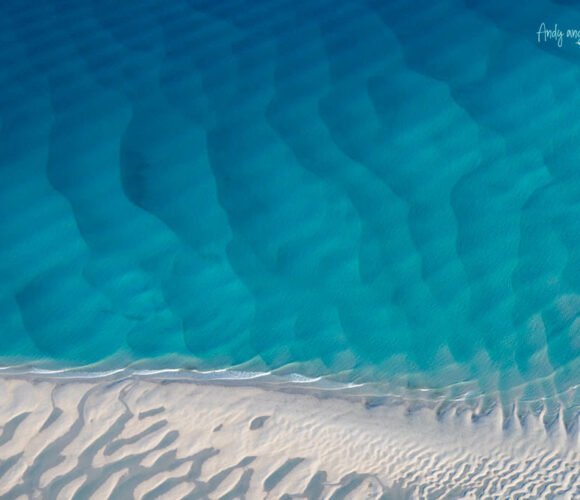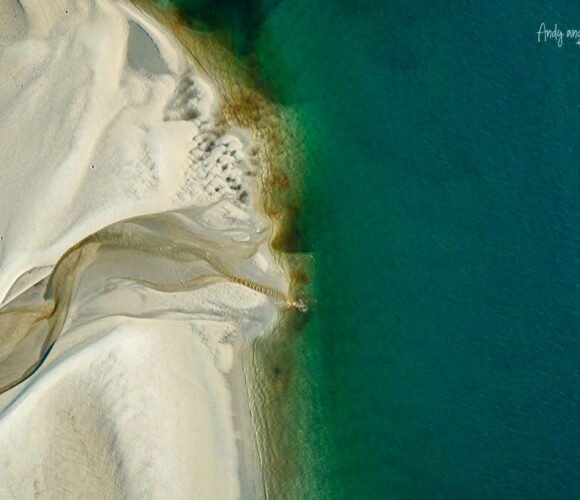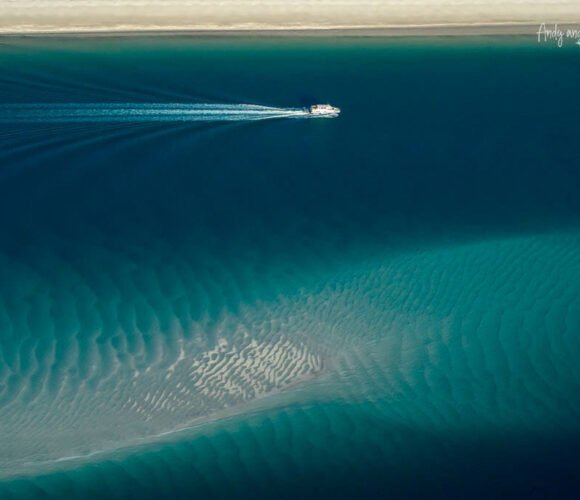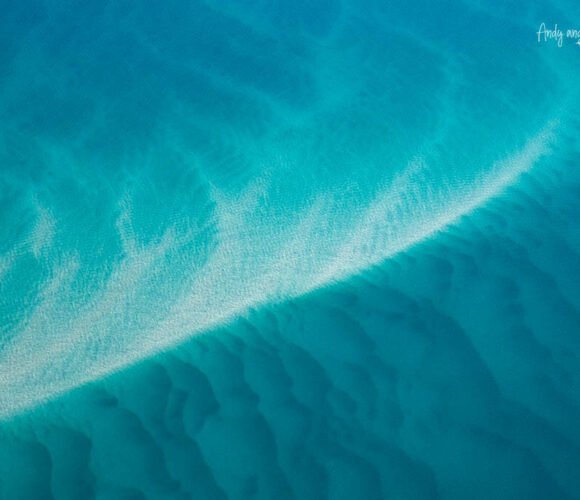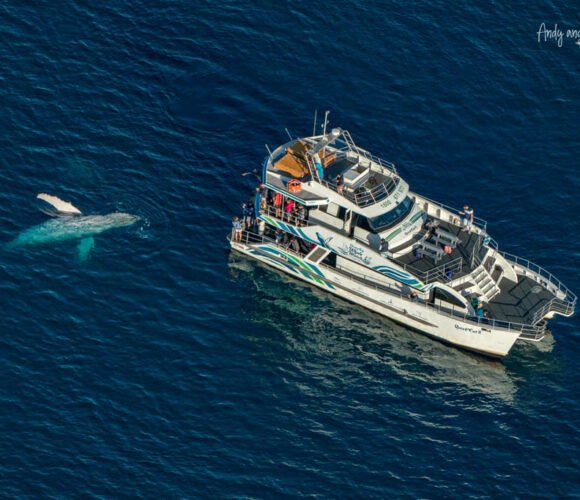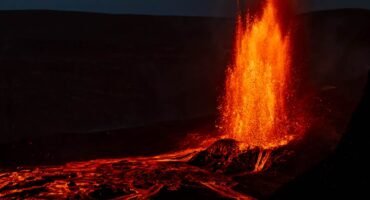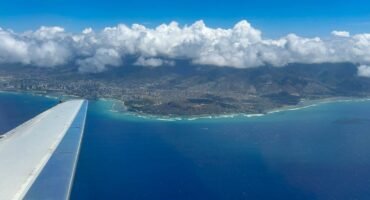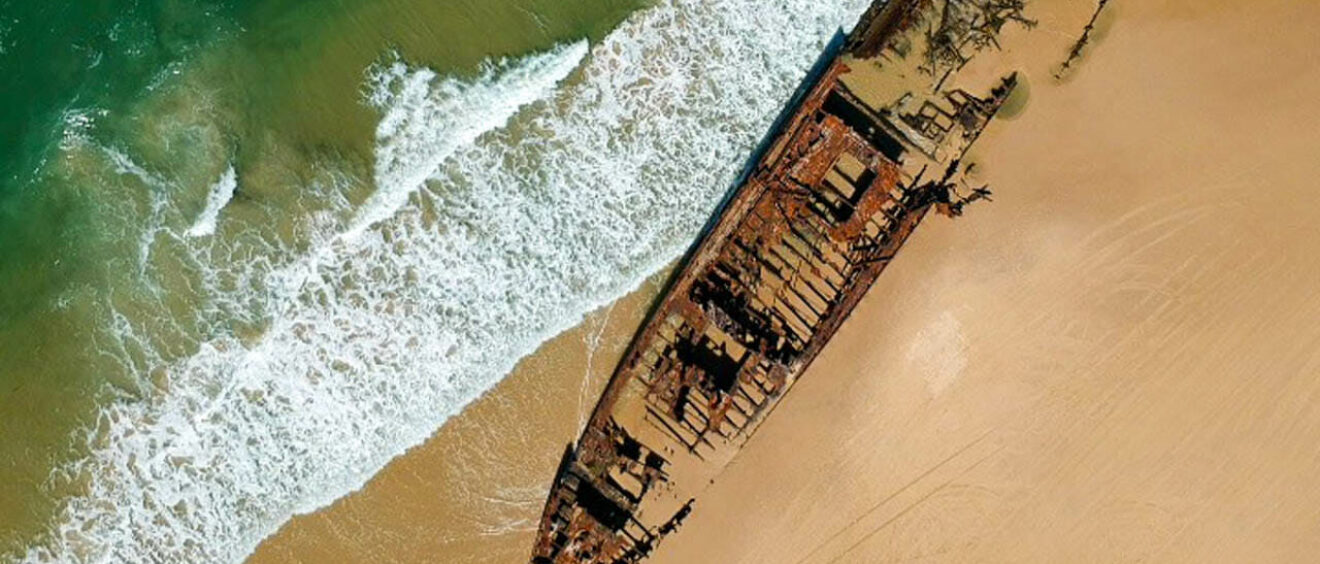
K’gari – Fraser Island
In August of 2022, we decided to take a very last minute holiday to Lady Elliot Island. As we had four nights on Lady Elliot, we decided to add a few extra days and visit Fraser Island. None of our Aussie mates have been there. One even asked, “Isn’t that just a big sand island”?
Fraser Island is the largest sand island in the world, stretching over 123 kilometres in length and 22 kilometres at its widest point. The highest dune is 244 metres, but most rise to between 100 and 200 metres above sea level. The island was renamed K’gari, the original Butchulla people’s name for the island, in 2021. The name comes from a creation story- according to the Butchulla Dreaming story, the creator being Beiral sent his messenger Yendingie to create land and sea for the people. His helper, a “beautiful white spirit called Princess K’gari”, worked hard to create the shores and the land, but afterwards persuaded Yedingie to let stay on their beautiful creation. In order to stay, she had to be changed into an island, so Yedingie created lakes, vegetation, animals and people to keep her company. She remains today, happy “in, and as a ‘paradise'”.
Getting There
We flew Jetstar direct from Sydney to Hervey Bay. Because we booked this 10 days in advance we scored award seats for 8000 Qantas points per person.
We arranged a transfer from the airport to the ferry, which turned out to be a two step process. The first part is a 10 minute bus ride from the airport to the Kingfisher Bay office in River Heads. We checked-in, dropped off our bags, and had about 20 minutes before re-boarding the bus for a short drive to the ferry dock. The ferry across the Great Sandy Strait took about 45 minutes and the water was perfectly calm.

Kingfisher Bay Resort
The resort is a 10 minute walk from the ferry dock, however they bring a little people mover tram thing to shuttle guests to reception.

We were directed to our King Bay Resort Room in the Boomanjin section which is past the wallum. These words meant nothing to us and the signage was a little confusing, but we figured it out quickly. The room had a nice view and was about a five minute walk to either the beach or the centre complex.
Breakfast was included in our package, and it was a decent hot and cold buffet. Only the main restaurant and the Sand Bar were open during our visit due to Covid-related staff shortages. Word to the wise – make dinner bookings before you arrive if you want to eat at a normal hour. We didn’t, but we kept checking back and lucked out with cancellations. The food was quite good so I imagine the fine dining restaurant would have been worth the splurge.
Whale Watching
We did two excursions with Hervey Bay Whale Watch. They pick up from the dock at 7:30am and then head north into Platypus Bay to look for humpback whales. We were there during peak season and had great sightings on both trips. There is an option to get in the water, however we didn’t find any whales who wanted to swim with us so this was just a watching trip.
Fun fact: Southern hemisphere whales have white bellies while northern hemisphere whales have dark bellies.
4WD
K’gari – Fraser is a bit of a 4WD mecca. If you read about our William Creek trip, you’ll remember that our 4WD experience is limited to pretty well-maintained tracks. Fraser Island is the largest sand island in the world, and the driving can be challenging. When we booked the 4WD, we were told there was a 45 minute orientation that we’d need to attend, and advised to do that the day before our booking so we didn’t waste time on the day. The orientation covered 4WD best practices specific to driving on the island, including water crossings and the importance of minding the tides. The hire company also gave us a handy itinerary based on the tides and track conditions.

We picked up the vehicle the next morning and headed for Lake Mackenzie. About a minute after leaving we were off the paved tarmac road, and about five minutes later we were on a sand track and needed to engage the 4WD. Andy did an amazing job driving all day. I barely drive in Sydney so wasn’t up for the challenge. About 30 minutes later we arrived at Lake Mackenzie.
Lake Mackenzie is a ‘perched’ lake, which means it contains only rainwater, no groundwater, is not fed by streams and does not flow to the ocean. The sand and organic matter at the base of the lake form an impervious layer, preventing rainwater from draining away. The sand here is pure, white silica and is not only beautiful to look at but feels beautifully soft to walk on. The sand acts as a filter, giving the water its clarity and helping to make the water so pure it can support very little life.
Andy went for a quick swim but the water was a bit too brisk for me so I walked along the shoreline and played with the new 360 camera.
From Lake Mackenzie we headed to the East coast of the island. We stopped in Eurong Beach for some pastries from the bakery, and then continued north on the 75 Mile Beach Highway.

I wasn’t sure why it was named 75 mile beach, given Australia uses the metric system. I did some googling later that day and learned that Australia adopted the metric system in 1974!
Before 1970, Australia mostly used imperial units, inherited from the United Kingdom. Between 1970 and 1988, imperial units were withdrawn from general legal use and replaced with the International System of Units, facilitated through legislation and government agencies.
Driving on the packed sand was definitely easier than the inland tracks, but there were two sections (Poyungan Rocks and Yidney Rocks) where we had to divert up a bypass track to avoid rocky sections of the beach. We learned in the video that the beach is technically considered a highway, so we should not exceed the 80 km/hour speed limit. In addition to seeing police vehicles throughout the day, there was an RBT (random breath testing) stop in the afternoon.
Our next stop was the Maheno Wreck.
Built in 1905, the SS Maheno was one of the first turbine-driven steamers. She plied a regular route between Sydney and Auckland until she was commissioned as a hospital ship in Europe during World War One. At the end of its commercial life in 1935, it was sold to a Japanese ship wrecker and left Sydney under tow. Four days later, about 50 miles from the coast, the towline broke in a cyclone. It was found three days later washed ashore on Fraser Island where it remains today.
It wasn’t very crowded, and the wind was light, so I decided to fly the drone. Our drone is about five years old and has a 10 min battery life. Where we live is usually windy, and most places we go prohibit drones, so I don’t have a lot of practice flying. Basically, I have no idea what I’m doing. I launched the drone, manoeuvred it over the wreck, shot some video, and took a few photos. I was pretty chuffed, until the loud battery warning signalled that the drone was returning to home. The drone was flying pretty low, and I was worried that it was going to hit one of the cars on the beach highway. I tried to ascend but couldn’t override the auto-pilot. Just as I’m beginning to panic, my drone descends behind me. The drone I was watching and worrying about wasn’t even mine!
Our last stop of the day was Eli Creek. This is the largest creek on the eastern beach, and there is a boardwalk that follows the creek inland through banksia and pandanus. Most people walk up the boardwalk and then float down the swiftly flowing creek. There were a ton of people picnicking, including a big tour bus, but there were only a few people in the creek so it was very pleasant and a great last stop for the day. Despite all the warning signs, we didn’t see any dingoes unfortunately.
We took a different inland track back to the resort to avoid going all the way back to Eurong. I can’t believe we found our way as there were several intersections with no signs. The forest is absolutely stunning. Fraser island is the only place in the world where rainforests grow from the sand. The trees are more than 1,200 years old and some reach up to 50 meters high.
Helicopter Tour
We also arranged a doors-off helicopter tour with Great Ocean Helicopters. We scheduled the tour to coincide with afternoon light and low tide, but we weren’t expecting whales! We spent about 45 minutes in Platypus Bay and along the West coast of Fraser Island.
We’re Andy and Jennifer—two former corporate executives who chose long ago to prioritise experiences over stuff while pursuing our passions for travel and photography. From the Arctic to Antarctica, and most places in between, we’ve captured the world through our lenses and love sharing those stories. Our careers gave us the means, but our purpose is inspiring others to explore and helping people create images they’re proud of.

